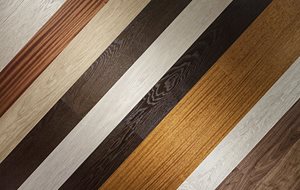Aug . 12, 2024 19:08 Back to list
Choosing the Best Flooring Options for Your Play Area to Ensure Safety and Comfort
The Importance of Choosing the Right Flooring for Play Areas
When creating a safe and enjoyable environment for children, one of the most critical aspects to consider is the flooring in play areas. Whether it's a playground, school, daycare, or a recreational space at home, the type of flooring can significantly impact both safety and play experience. This article discusses various flooring options for play areas, highlighting their advantages, potential drawbacks, and the key considerations in making the right choice.
Safety First
Safety is the paramount concern when selecting flooring for play areas. Children are naturally energetic and curious, and accidents can happen in the blink of an eye. To minimize the risk of injuries from falls, many play area flooring options are specifically designed with safety in mind. Soft surfaces such as rubber mats, artificial grass, and foam tiles can cushion falls, providing a safer landing for children who might trip or tumble during play.
For instance, rubber flooring is a popular choice in outdoor playgrounds. It comes in various thicknesses, which can be tailored to different height requirements, ensuring adequate fall protection. Additionally, rubber offers excellent traction, reducing the likelihood of slips, even when wet. Artificial turf is another favored option, especially in places where natural grass cannot thrive. It provides a soft surface that mimics the feel of grass while requiring less maintenance and offering consistent performance for various activities.
Durability and Maintenance
In addition to safety, durability is a significant factor when selecting flooring for play areas. Children’s activities can be rough, involving running, jumping, and even the occasional spill. A good flooring material should withstand heavy use without showing significant wear and tear.
play area flooring

Rubber flooring, for example, is not only safe but also exceptionally durable. It is resistant to scuffs, stains, and harsh weather, making it an ideal choice for high-traffic play areas. On the other hand, natural grass can quickly degrade with heavy foot traffic or adverse weather conditions. While it’s aesthetically pleasing and provides a natural feel, maintenance costs—including regular mowing, watering, and fertilization—can be high.
For indoor play areas, modular foam tiles can be an excellent choice. They are soft, colorful, and easy to install or replace. Maintenance is also straightforward, as they can be easily cleaned or swapped out if damaged.
Aesthetic Appeal
While safety and durability are crucial considerations, the aesthetic aspect of flooring should not be overlooked. Play areas are often vibrant and lively, reflecting the imagination and creativity of children. Choosing flooring that enhances the visual appeal of these spaces can create a more inviting atmosphere.
Colors, patterns, and textures can be integrated into flooring solutions to promote engagement and stimulate creativity. For instance, interlocking tiles in various colors can be used to create fun designs or patterns, transforming an ordinary floor into a dynamic play surface.
Conclusion
In conclusion, selecting the appropriate flooring for play areas involves balancing safety, durability, and aesthetic appeal. Rubber and foam flooring are excellent choices for their cushioning and maintenance benefits, while artificial turf can provide a natural feel with reduced upkeep. Ultimately, the right flooring can significantly enhance the play experience, ensuring children can engage in physical activity safely and joyfully. As communities continue to develop play spaces, thoughtful considerations in flooring selection will foster environments where children can thrive through play.
-
Professional Tennis Court Lining Services Pickleball Court Marking Experts
NewsJun.24,2025
-
Pickleball Court for Sale - Premium Flooring Solutions for Sports Venues
NewsJun.10,2025
-
Maple Grove Outdoor Pickleball Courts - Premium Conversion & Durable Materials
NewsJun.10,2025
-
Best Pickleball Outdoor Courts Solutions Convert Tennis Courts, Outdoor Covered Courts, Maple Grove Options
NewsJun.10,2025
-
Convert Tennis Court to Pickleball Fast & Affordable
NewsJun.09,2025
-
Indoor Outdoor Pickleballs Durable & All-Weather for Any Court Play
NewsJun.09,2025

